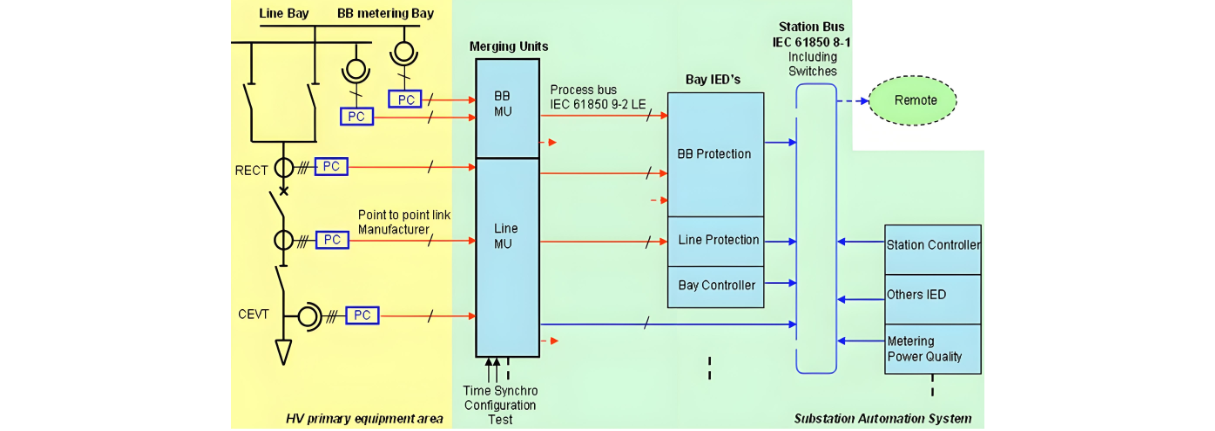
IEC 61850 Standards and NCIT - Related Communication in GIS
The IEC 61850 8 - 1 standard is specifically applicable to station bus communication, providing a framework for data exchange and interoperability within substation automation systems. On the other hand, the IEC 61850 9 - 2 LE standard is directly relevant to the communication of Non - Contact Inductive Transducer (NCIT) sensors.
Ethernet optical communication drivers play a crucial role in this setup. Their significance stems from the utilization of glass core fiber optics as the physical transmission medium. Fiber optics offer advantages such as high - speed data transfer, immunity to electromagnetic interference, and long - distance communication capabilities, making these drivers essential for reliable and efficient communication.
Due to the inherently low - level output signals from an NCIT metering element, the presence of a "Primary Converter" (PC) in close proximity is indispensable. The PC is an electronic device equipped with several key functions. It incorporates signal filtering through a low - pass filter to eliminate unwanted high - frequency noise, digitizes the signal using a Controller Area Network (CAN) interface, and performs necessary signal processing. These operations ensure that the raw signals from the NCIT are in a suitable form for further transmission and analysis.
The computational capabilities of the PC are harnessed to communicate with a device known as the Merging Unit (MU) via a proprietary protocol. The MU serves as a central hub, aggregating inputs from multiple PCs. It is equipped with multiple output ports, which are designed to enable communication with various pieces of equipment, including protection relays, bay controllers, and metering devices. By distributing the processed measurements to these different systems, the MU facilitates seamless integration and coordinated operation within the overall electrical infrastructure.
To achieve optimal metering accuracy, it is imperative to match the sensitivity level of the metering element with the background noise level of the printed circuit board. Minimizing the background noise to the lowest possible level ensures that the metering element can accurately detect and measure electrical quantities without being affected by spurious signals.
Figure [1] illustrates the IEC 61850 communication protocol in conjunction with NCIT sensors for Gas Insulated Substations (GIS). This visual representation provides a comprehensive overview of how the various components interact and communicate, highlighting the integration of standards - based communication and specialized sensor technology to enhance the performance, reliability, and efficiency of GIS - based electrical systems.

